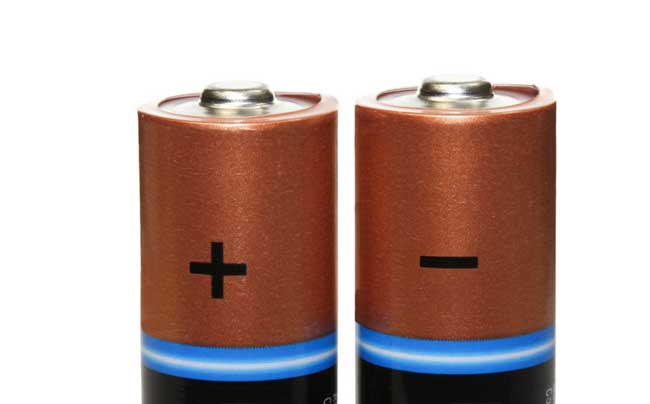How to Properly Care for Your Batteries

Batteries are simple enough to use, but treating them right to ensure they don't conk out prematurely can be tricky. Here are some tips for keeping your batteries in tip-top shape.
Most cell phones use lithium-ion batteries, a variation of which is the lithium-ion polymer battery used in some newer cell phones, including the iPhone.
A typical lithium-ion cell phone battery will provide about four to six hours of talk time before it’s time for a charge. (Apple claims up to five hours of talk time for its 3G iPhone.)
When it's time to charge up your phone, should you wait until the power runs down to zero? Contrary to what you may have heard, the answer is a resounding "No!", battery experts say.
While some batteries must be discharged fully before being recharged, lithium-ion batteries used in cell phones can be charged at random, Joern Tinnemeyer, vice president of research and development at Cadex Electronics, told TechNewsDaily.
“In the past, nickel-based batteries were typically used in cell phones,” Tinnemeyer said.
These batteries suffered from the “memory effect," he added, where if they are recharged after only three-quarters of their power being used, they reset their charge limit to the new reduced level and then "you’ve lost a little part of that battery."
Get the world’s most fascinating discoveries delivered straight to your inbox.
An exception to the rule is if the battery indicator or fuel gauge is acting up, Tinnemeyer said, in which case a full discharge and then a recharge usually fixes them.
One caution, however, is that each time the battery is run down to zero and then charged up again – referred to as a charge cycle – the battery capacity is diminished slightly and eventually you’ll have to replace the battery.
For the iPhone, this means sending it back to the manufacturer, since the battery is built into the device. Apple recommends keeping up with the latest software update and switching off functions that are used infrequently, such as "location services" that pinpoint your location.
Tinnemeyer advises people to leave their cell phone batteries in the half-full state and keep them away from heat sources.
Laptops
Just like cell phones, most laptops are powered by lithium-ion batteries, so all of the advice for cell phone battery care also applies to laptops.
The only difference is that laptop batteries age faster than those in other applications because of heat. During typical use, the inside of your laptop can reach as high as 113 degrees Fahrenheit (45 degrees Celsius).
The combination of a fully charged battery and heat can lead to permanent damage to your battery. This full-charge hot state is encountered when your laptop is plugged into an outlet. For this situation, “my recommendation would be to remove that battery from the laptop and just put it to the side,” Tinnemeyer said.
AA and AAA
Walking into a Radio Shack to buy a pack of batteries can be overwhelming as there are so many to choose from. For starters, should you buy rechargeable or one-time use, or primary, ones?
While there is a fundamental difference in the chemistry of these batteries – which makes rechargeable batteries rechargeable – there’s no real difference in performance, Tinnemeyer said. Nowadays, the lithium-based rechargeables have “just as good of a current response,” meaning they can be used to power the flash on a camera, for example, where current needs to be drawn very quickly.
However, Tinnemeyer would not recommend using the nickel metal hydride and nickel cadmium batteries, which are still available in AA and AAA format, especially for applications like flash photography. These batteries are inexpensive, but pack less power and degrade faster than lithium-based batteries, and the nickel cadmium ones contain toxic materials.
Also, look for batteries with higher power capacities, and pay attention to when the batteries were made.
“They’re almost like vegetables, so look for the date," Tinnemeyer said. "You don’t want the battery to be a couple of years old and catching dust."



